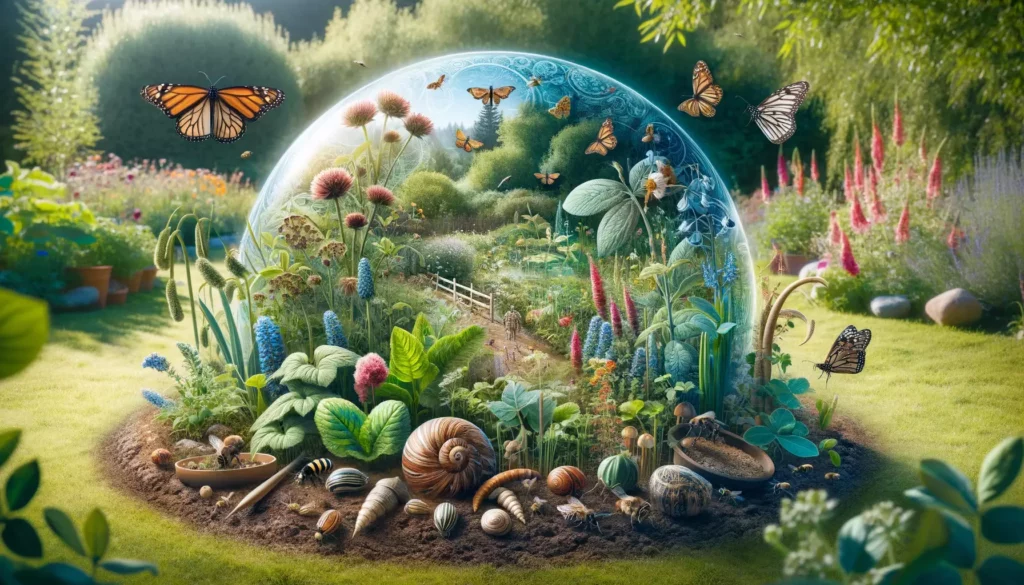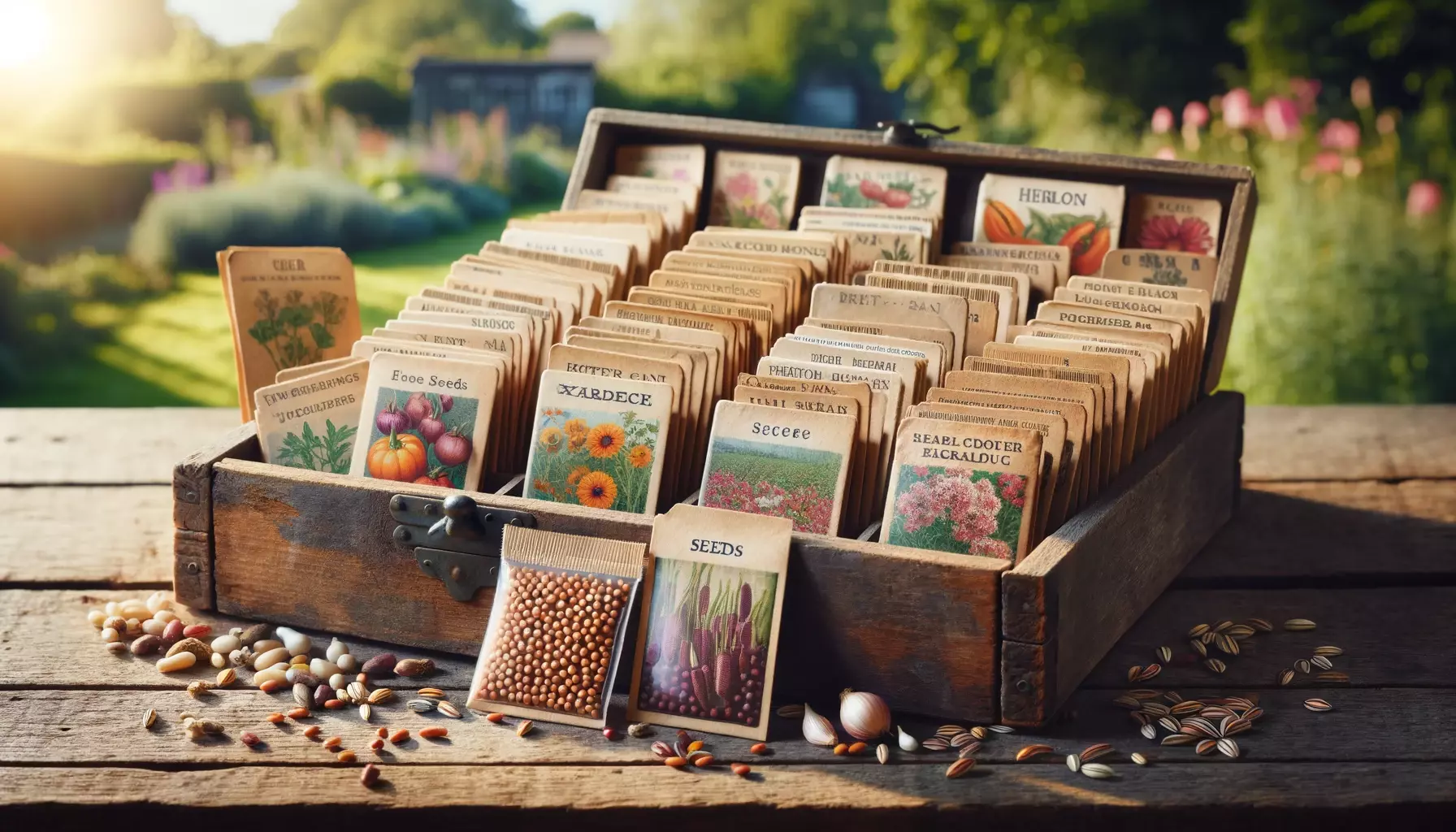Introduction:
In the world of gardening, few practices are as rewarding and sustainable as seed saving. This ancient tradition, rooted in the very heart of agriculture, has shaped the way we cultivate and cherish plant biodiversity. Whether you’re a seasoned gardener or just starting, understanding the art of seed saving can transform your garden into a haven of heirloom treasures and botanical diversity. In this guide, we’ll explore everything from the simple steps beginners can take, to advanced techniques for the experienced green thumb. Join us on this journey to preserve the past and sow the seeds of the future.
Section 1: What is Seed Saving and Why is it Important?
Seed saving, at its core, is the practice of collecting seeds from plants for future planting. This process is not only about preserving the genetic material of plants but also about maintaining plant diversity, adapting to local growing conditions, and preserving the heritage and stories associated with heirloom varieties.
The importance of seed saving stretches beyond the borders of individual gardens. It’s a step towards sustainability, helping to reduce dependence on commercially available seeds, many of which are hybrids designed for specific conditions and often not suited to local environments. By saving seeds, gardeners can develop plant strains that are more resilient, better adapted to local climates, and resistant to local pests and diseases.
Moreover, seed saving is a testament to the diversity of our planet’s flora. Each saved seed is a living library of genetic information, a piece of history, and a potential source of future food security.
Section 2: Getting Started with Seed Saving for Beginners
Seed saving can be an enriching experience, especially for beginners who are just discovering the wonders of gardening. Starting this journey is easier than it might seem, and it doesn’t require a lot of specialized equipment. Here’s how you can dive into the world of seed saving:

- Choosing the Right Plants: Start with self-pollinating plants like tomatoes, peppers, beans, lettuce, peas, and broccoli. These plants are less likely to cross-pollinate, making them ideal for beginners.
- Harvesting Seeds: Look for healthy, mature plants as your seed source. Let the seeds reach full maturity on the plant – this means waiting until the seed pods or fruits have dried up or changed color.
- Drying and Storing: Once collected, seeds need to be dried. Spread them out on a clean surface in a well-ventilated area. After they are dry, store them in labeled envelopes or containers in a cool, dry place.
- Keeping Records: Document your seed-saving journey. Note down the plant variety, date of harvest, and any other observations. This will be invaluable information for your future gardening endeavors.
As a beginner, remember that patience and observation are key. Each plant and each seed tells its own story, and as you learn, you’ll become more attuned to the subtle nuances of seed saving.
Section 3: Key Benefits of Saving Seeds
The practice of saving seeds extends far beyond the mere act of gardening. It’s a way to connect with the environment, understand the cycles of nature, and contribute to a sustainable future. Here’s a look at the key benefits of saving seeds:

- Promoting Biodiversity: Saving seeds from a variety of plants encourages genetic diversity, leading to a more resilient garden. This biodiversity is crucial for adapting to changing climate conditions and pest challenges.
- Adaptation to Local Conditions: Seeds saved from plants in your garden are uniquely adapted to your local climate and soil conditions. Over time, these plants become more resilient and better suited to thrive in your specific environment.
- Preservation of Heirloom Varieties: Many heirloom varieties, passed down through generations, are not available commercially. Seed saving helps in preserving these unique varieties with their distinct flavors and stories.
- Cost-Effectiveness: By saving seeds, gardeners can reduce the need to purchase new seeds every season, leading to significant savings over time.
- Educational Value: The process of saving seeds is deeply educational, offering insights into plant biology, ecology, and the importance of sustainability.
- Community and Cultural Importance: Seed saving often involves community engagement and can help preserve cultural traditions related to agriculture and local varieties.
By understanding these benefits, gardeners can appreciate the broader impact of their seed-saving efforts, contributing not only to their gardens but also to the global ecosystem.
Section 4: Advanced Techniques in Seed Saving
For those who have mastered the basics of seed saving, there are advanced techniques that can further enhance the quality and diversity of your seed collection. These methods require a bit more knowledge and precision but can be incredibly rewarding.

- Selective Breeding: By choosing seeds from plants with specific desirable traits, you can gradually develop varieties that exhibit those qualities more prominently.
- Understanding Cross-Pollination: Learn how different plants pollinate and use techniques like isolation distances, timing, and physical barriers to prevent unwanted cross-pollination.
- Hand-Pollination: For plants that require it, such as certain squash and melon varieties, hand-pollination can ensure purity of the seed variety.
- Seed Viability Testing: Test a small sample of seeds for germination before planting season to assess the viability of your seed stock.
- Climate Adaptation: Observe how different varieties perform under your specific climatic conditions and select seeds from plants that thrive in those conditions.
- Record-Keeping: Maintain detailed records of your seed-saving activities, including variety names, planting dates, harvesting times, and any observations about plant growth and health.
These advanced techniques not only improve the quality of your seeds but also deepen your understanding of plant biology and ecology. They turn the art of seed saving into a more scientific and rewarding pursuit.
Section 5: Seed Saving and Environmental Sustainability
The practice of seed saving is much more than a gardening technique; it’s a powerful tool for environmental sustainability. By preserving diverse plant varieties, seed saving contributes significantly to the ecological balance of gardening spaces.

- Enhancing Biodiversity: Seed saving promotes a rich variety of plant species, which in turn supports a wider range of insects, birds, and other wildlife. This biodiversity is crucial for a healthy and resilient ecosystem.
- Soil Health: Many heirloom and open-pollinated plants adapted through seed saving contribute to soil health, reducing the need for chemical fertilizers and pesticides.
- Climate Resilience: By selecting seeds from plants that thrive in specific conditions, gardeners can cultivate crops that are more resilient to climate change, such as drought-tolerant or flood-resistant varieties.
- Reducing Carbon Footprint: Locally saved seeds reduce the need for transportation and the associated carbon emissions compared to commercially bought seeds.
- Preservation of Natural Resources: Seed saving encourages gardeners to work with nature, reducing reliance on non-renewable resources and promoting sustainable gardening practices.
Seed saving is not just a nod to the past; it’s a step towards a more sustainable and environmentally conscious future. By engaging in this practice, gardeners can make a real difference in the health and vitality of our planet.
Conclusion:
Seed saving is a journey back to the roots of agriculture, a practice steeped in tradition yet utterly essential for our future. It’s a bridge connecting past, present, and future, allowing us to preserve the biodiversity that sustains us. Whether you are a beginner or an experienced gardener, the world of seed saving offers endless opportunities for learning, growth, and connection with the environment. As you embark on or continue this rewarding journey, remember that each seed you save carries the promise of a sustainable, vibrant future.
